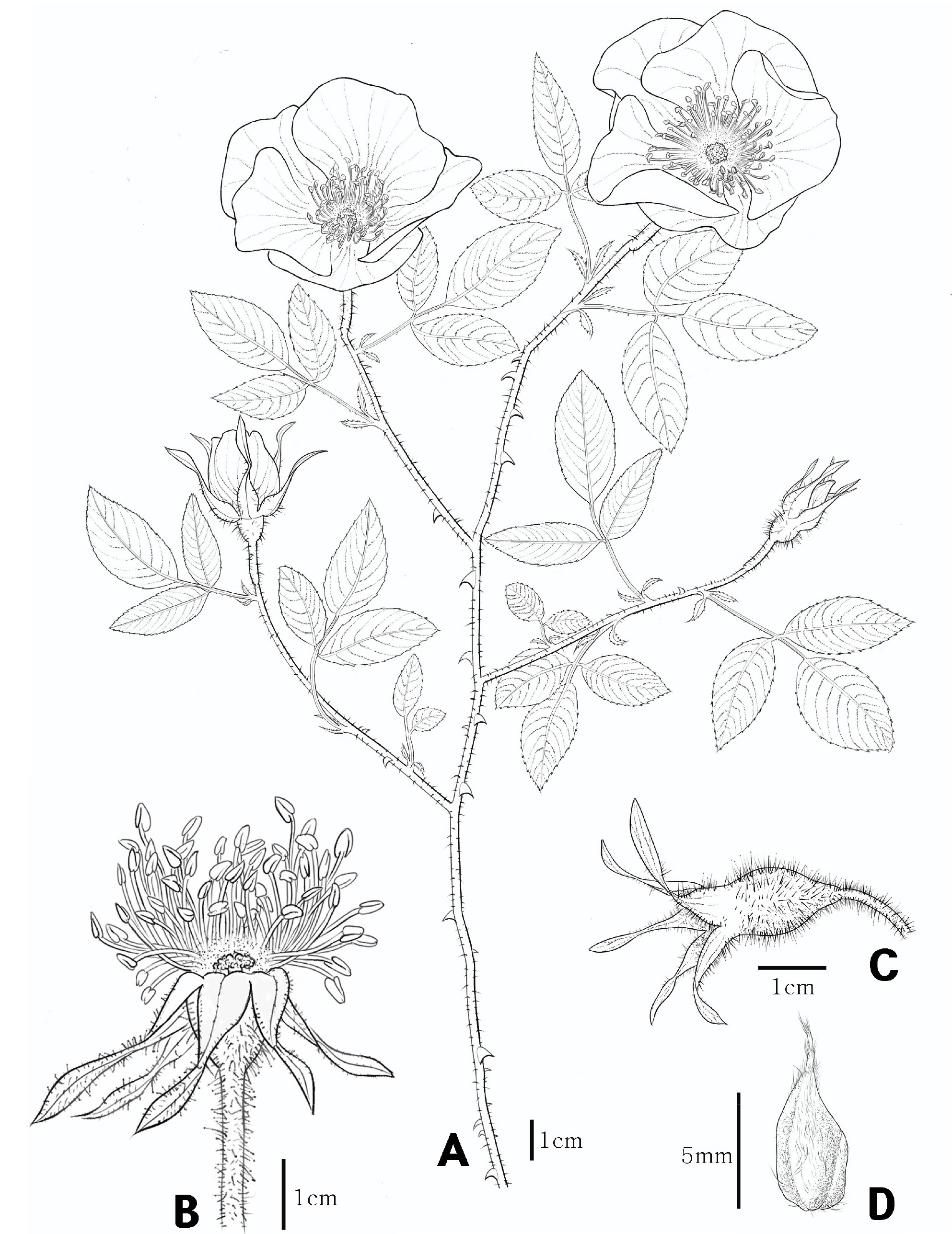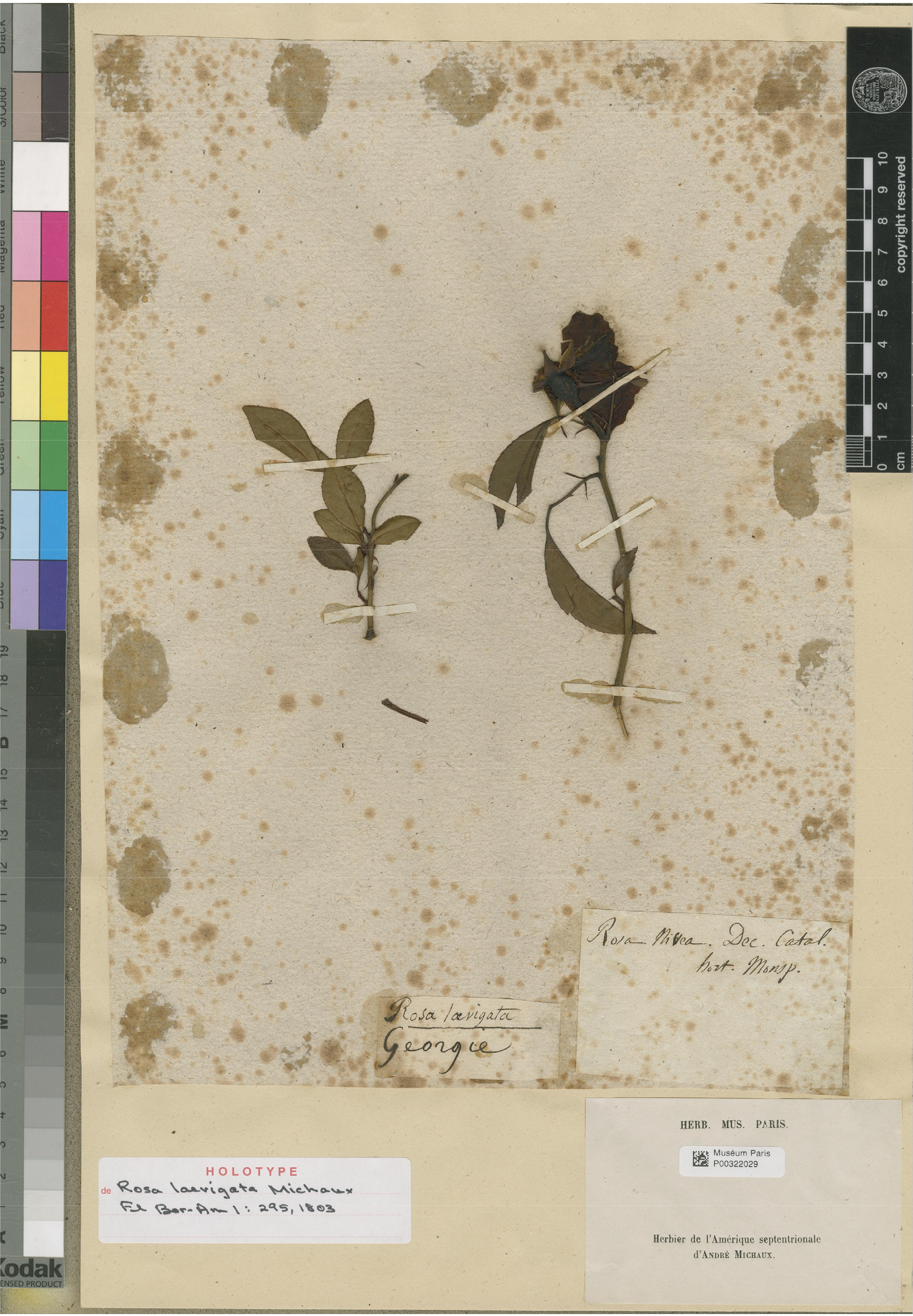Introduction
The genus Rosa L. (Rosaceae) comprises about 150–200 species widely distributed throughout the temperate and sub-tropical habitats of the northern hemisphere (Fougère-Danezan et al., 2015; Gu and Robertson, 2003; Liu et al., 2015), with the exception of one tropical African species (Fougère-Danezan et al., 2015). Conventional taxonomy (Wissemann, 2003) divides the genus into four subgenera: Hulthemia (Dumort.) Focke, Platyrhodon (Hurst) Rehder, Hesperhodos Cockerell, and Rosa L. The first three subgenera are monotypic or contain two species, whereas the subgen. Rosa contains all the remaining species (some 180 species) and is divided into 10 sections: Pimpinellifoliae (DC.) Ser., Cinnamomeae (DC.) Ser., Synstylae DC., Indicae Thory, Banksianae Lindl., Laevigatae Thory, Bracteatae Thory, Gallicanae (DC.) Ser., Carolinae Crép., and Caninae (DC.) Ser. (Cheikh-Affene et al., 2015; Koopman et al., 2008; Liu et al., 2015; Wissemann and Ritz, 2005). In Korea, 10 taxa of the genus Rosa are distributed (Lee, 2007). These taxa are classified into three section (Pimpinellifoliae, Synstylae, and Cinnamomeae) within the subgen. Rosa.
Rosa laevigata Michx. is the only species in sect. Laevigatae which distributed in East and South China, and Vietnam, at elevations of 200–1600 m (Gu and Robertson, 2003; Zhang et al., 2019). With large white fragrant flowers and glabrous leathery leaves, Rosa laevigata might make a good ornamental (Zhang et al., 2019). Besides, its root bark contains tannin used for tanning; its fruit contains sugar used for fermenting wine; its roots, leaves, and fruit are all used medicinally (Gu and Robertson, 2003; Zhang et al., 2019).
In this study, we collected Rosa laevigata Michx. in sect. Laevigatae (Subg. Rosa) in Geoje-si, Gyeongsangnam-do, and reported as a newly alien plant in Korea. We provided its morphological description, detailed illustrations, and a key to the related taxa in Korea (Figs 1, 2 and 3).
Description of the species
Rosa laevigata Michx., Fl. Bor.-Ame. 1:295 (1803).
Korean name: Wang-jjil-re-na-mu (왕찔레나무).
Type: USA. Georgia, A. Michaux s.n. (holotype: P, 00322029!, image seen).
Shrubs evergreen, climbing, ca. 7 m. Stems terete, usually glabrous; branchlets dark brown to purplish red; prickles scattered, curved, 3-5 ㎜ long, flat; bristles glandular, dense on young stems. Leaves alternate, stipules caducous, linear-lanceolate or lanceolate, glandular serrate, apex acuminate; petiole 1-4 ㎝ long, sometimes with glandular bristly and prickles, glabrous; leaflets 3, rarely 5, terminal larger than laterals, elliptic-ovate, obovate, or lanceolate-ovate, 2-7 × 1.5-3.5 ㎝, leathery, sometimes abaxially minutely prickly and glandular bristly along midvein when young, glabrescent, adaxially glabrous, base broadly cuneate or obtuse, margin acutely serrate, apex acute or rounded-obtuse. Flowers solitary, 5-9 ㎝ in diam.; pedicel 2-3.5 ㎝, densely glandular bristly; bracts absent. Hypanthia ovoid, densely glandular bristly. Sepals 5, persistent, 1.8-3.2 ㎝ long, ovate-lanceolate, leaflike, abaxially acachnoid or glabous, adaxially densely acachnoid, margin entire, often dense glandular bristly. Petals 5, white, 3-4 × 3.5-5.5 ㎝, broadly obovate, base broadly cuneate, apex emarginate. Stemens numerous, 8-19 ㎜ long. Styles free, 1-2 ㎜ long, pubescent. Fruit hip, purple-brown, pyriform or obovoid, rarely subglobose, 1-1.5 ㎝ in diam., densely glandular bristly, with persistent, erect sepals. Seeds achenes, 20-30, light tan, 6-8 × 3-5 ㎜. Chromosome number 2n=14, reported by Robertson (1974).
Flowering: Apr to Jun.
Fruiting: Sep to Nov.
Distribution: Native in China (Anhui, Fujian, Guangdong, Guangxi, Guizhou, Hainan, Hubei, Hunan, Jiangsu, Jiangxi, Shaanxi, Sichuan, Yunnan, and Zhejiang Provinces), Taiwan, and Vietnam.
Non-native in Japan, South Africa, United States, the Pacific Islands, and Korea (Gyeongsangnam-do).
Habitat: Thickets, scrub, open montane areas, open fields. In Korea, this species grows roadside and grave vicinity.
Specimens examined: KOREA. Gyeongsangnam-do, Geoje-si, Jangmok-myeon, Songjinpo-ri, 28 Apr 2020, J.-S. Kim kjs20017 (KB), kjs20018 (3 sheets, KB), kjs20019 (2 sheets, KB), kjs20020 (2 sheets, KB), kjs20021 (2 sheets, KB); 29 Apr 2020, J.-S. Kim kjs20022 (2 sheets, KB); 22 Jun 2020, J.-S. Kim kjs20023 (2 sheets, KB), kjs20024 (2 sheets, KB).
A key to Rosa laevigata and related taxa in Korea
1. Stems climbing, decumbent or procumbent.
2. Evergreen, leaflets 3(-5), hypanthia densely glandular bristly, flowers solitary, 5-9 ㎝ in diam. R. laevigata 왕찔레나무
2. Deciduous, leaflets 5-9, hypanthia glabrous, glandular- pubescent, flowers numerous or several in corymb, 2-4 ㎝ in diam.
3. Stipules pectinate, flowers numerous in corymb R. multiflora 찔레나무
3. Stipules irregularly serrate at margin, flowers several in corymb.
4. Leaflets 7-9, rarely 5, apex acute or acuminate, abaxially along veins pubescent, styles glabrous R. maximowicziana 용가시나무
4. Leaflets 5-7, rarely 9, apex rounded-obtuse or acute, abaxially glabrous or sparsely pubescent, styles pubescent R. luciae 제주찔레나무
1. Stems erect.
5. Flowers white or pinkish white.
6. Leaflets 7-11(-15), elliptic, obovate-elliptic, or oblong-elliptic hypanthia oblong R. koreana 흰인가목
6. Leaflets 7-9(-11), oblong, oblong-ovate, suborbicular, ovate, or elliptic, hypanthia subglobose R. spinosissima 둥근인가목
5. Flowers reddish purple or pale red.
7. Branchlets and prickles tomentose, leaflets thick in texture, adaxially rugose, flowers 6-7 ㎝ in diam. R. rugosa 해당화
7. Branchlets and prickles glabrous, leaflets thinner in texture, not rugose, flowers 3.5-5 ㎝ in diam.
8. Hypanthia depressed globose or ovoid-globose R. davurica 생열귀나무
8. Hypanthia ellipsoid or oblong R. acicularis 인가목
Note: Rosa laevigata Michx. in sect. Laevigatae (Subg. Rosa) is easily distinguished from other species of the genus Rosa in Korea, with its evergreen, 3(-5) leaves, large flowers (5-9 ㎝), and many glandular bristly features in the hypanthia. The Korean name was named 'Wang-jjil-re-na-mu' because the shape of the flower resembles the Rosa multiflora Thunb. (Korean name: Jjil-re-na-mu) and has rare large characteristic.
The Rosa laevigata, commonly called "Cherokee rosa", is a landscape plant that is widely planted around the world due to its large and beautiful flowers. It is naturalized in the Japan, South Africa, United States, and the Pacific Islands (U. S. Botanical Gardens) and is also reported as a naturalized plant in Japan (Shikoku and Kyushu) (Ohba, 2001).
In Korea, it is believed that the area around Songjinpo-ri, Jangmok-myeon, Geoje-si has been naturalized or introduced since at least 20 years ago, and it is estimated that the plantations for gardens in nearby villages have spread. The growth site of Rosa laevigata is on the side of the road or around the tomb, and grow while winding the stems of Pinus thunbergii Parl., Castanea crenata Siebold & Zucc., Robinia pseudoacacia L., Styrax japonicus Siebold & Zucc., and Mallotus japonicus (L.f.) Müll. Arg., etc. Also, it becomes with shrubs and herbaceous plants such as Humulus japonicus Siebold & Zucc., Phytolacca americana L., Achyranthes bidentata var. japonica Miq., Rosa multiflora Thunb., Rubus crataegifolius Bunge, Rhus javanica L., and Dioscorea quinqueloba Thunb., etc. There are two populations identified, and the total number of individuals is about 50.







